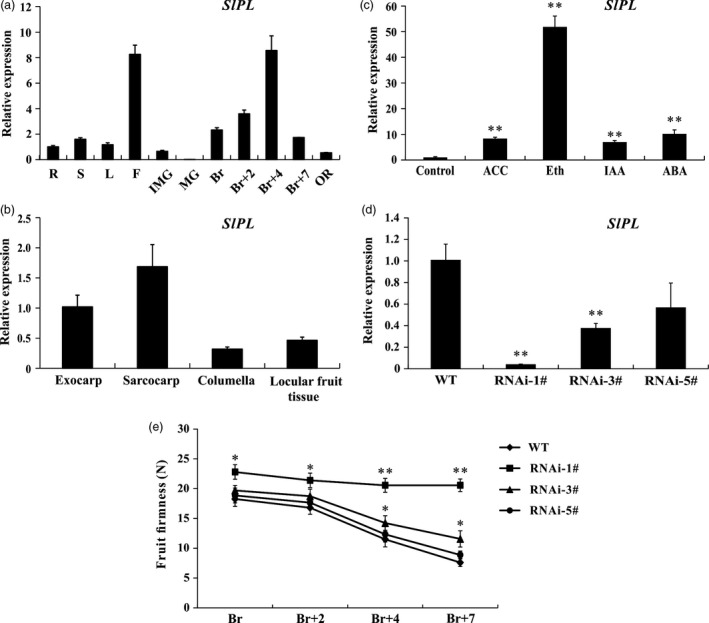Figure 2.

Expression patterns of SlPL (Solyc03g111690) and phenotype identification of SlPL ‐RNAi transgenic tomato. (a) Expression of SlPL in various tissues including roots (R), stems (S), fully expanded leaves (L), flowers (F) and fruit at different developmental stages: immature green (IMG), mature green (MG), breaker (Br), 2 day after Br (Br+2), 4 day after Br (Br+4), 7 day after Br (Br+7, RR) and over ripe (OR). (b) Spatial expression of SlPL in WT fruit at Br+4 stage. (c) Response of SlPL to several ripening‐related hormones after treatment for 96 h. ACC, 1‐aminocyclopropane‐1‐carboxylic acid; Eth, ethephon; IAA, indole‐3‐acetic acid; and ABA, abscisic acid. (d) SlPL mRNA level in fruit of three independent RNAi lines (RNAi‐1#, RNAi‐3# and RNAi‐5#). (e) Phenotype of enhanced fruit firmness at different fruit development stages in RNAi lines. Quantitative PCR data represent mean values for three independent biological replicates (n = 3). The fruit firmness values represent the means ± standard error (SE) of 20 fruit per line at each stage. * and ** represent significant differences between SlPL ‐RNAi lines and WT by t‐test with P < 0.05 and P < 0.01, respectively.
